Physical Address
304 North Cardinal St.
Dorchester Center, MA 02124

Dog anxiety is a prevalent issue that can significantly affect the quality of life for both pets and their owners. It manifests in various forms, from mild nervousness to severe distress, leading to a range of problematic behaviors. Understanding the underlying causes and recognizing the signs are the first steps toward helping your anxious companion.
This article delves into proven techniques to alleviate dog anxiety, offering practical advice to foster a serene environment for your pet. Whether you’re dealing with separation anxiety, fear of loud noises, or general nervousness, the following strategies can provide relief and enhance the bond between you and your furry friend.
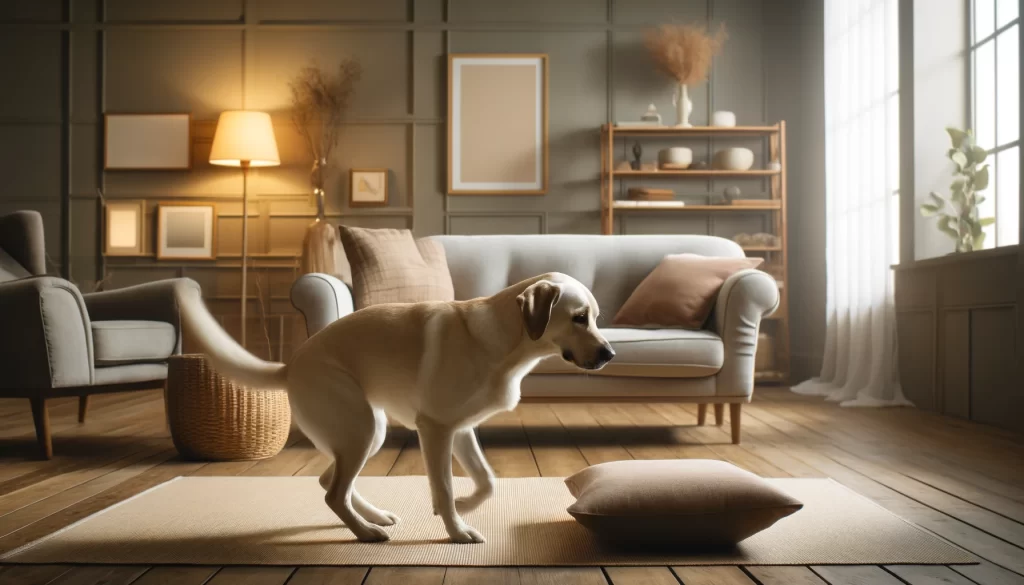
Dog anxiety is a condition that elicits fear, nervousness, and unease in dogs, significantly impacting their behavior and overall well-being. Just like humans, dogs can experience anxiety, which often reflects in their behavior in various situations. Recognizing the signs of anxiety is crucial in providing the necessary support and interventions. Common indicators include excessive barking, pacing, shaking, and in more severe cases, aggression or destructive behavior.
Understanding the types of dog anxiety is essential for addressing this condition effectively. The most prevalent forms include separation anxiety, fear-related anxiety, and age-related anxiety. Separation anxiety occurs when a dog is distressed about being left alone or separated from its family members. Fear-related anxiety can be triggered by loud noises, unfamiliar people or animals, and new or strange environments. Age-related anxiety affects older dogs and can be associated with cognitive dysfunction syndrome, leading to confusion and fear in familiar settings.
The root causes of dog anxiety are varied and can stem from past traumas, lack of socialization, or even genetic factors. For instance, dogs that have been rescued from shelters often carry anxiety from past neglect or abuse. Similarly, breeds with a predisposition to anxiety or nervousness require special attention to prevent stress.
Addressing dog anxiety starts with understanding and empathy. It’s important for pet owners to observe their dogs’ behavior closely and recognize the signs of anxiety early. By doing so, interventions can be more targeted and effective, leading to a happier and more relaxed pet. The journey towards managing dog anxiety begins with awareness and a commitment to providing a supportive and loving environment for your anxious dog.

Identifying the specific triggers of your dog’s anxiety is a critical step towards finding an effective solution. Each dog is unique, with certain situations or environments potentially causing distress. Common triggers include loud noises such as fireworks or thunderstorms, unfamiliar places and people, or the absence of a family member. Recognizing these triggers is essential for implementing preventive measures and calming strategies tailored to your dog’s needs.
Separation anxiety is one of the most common forms of distress in dogs, characterized by a dog’s extreme discomfort when left alone. This condition can lead to destructive behavior, incessant barking, and even self-harm as dogs attempt to escape or cope with their anxiety. Understanding that this behavior stems from fear rather than disobedience is crucial for compassionate and effective intervention.
Past experiences can also play a significant role in a dog’s anxiety. Dogs that have been rehomed, experienced trauma, or lacked early socialization are more susceptible to anxiety. These past experiences can shape their perceptions of safety and trust, making it essential to approach them with patience and understanding.
Lastly, genetic predisposition can influence a dog’s likelihood of experiencing anxiety. Certain breeds are more prone to anxious behaviors, necessitating a proactive approach in managing their environment and interactions. By acknowledging and understanding these factors, pet owners can create a supportive environment that addresses the root causes of their dog’s anxiety, paving the way for a more peaceful and contented companionship.
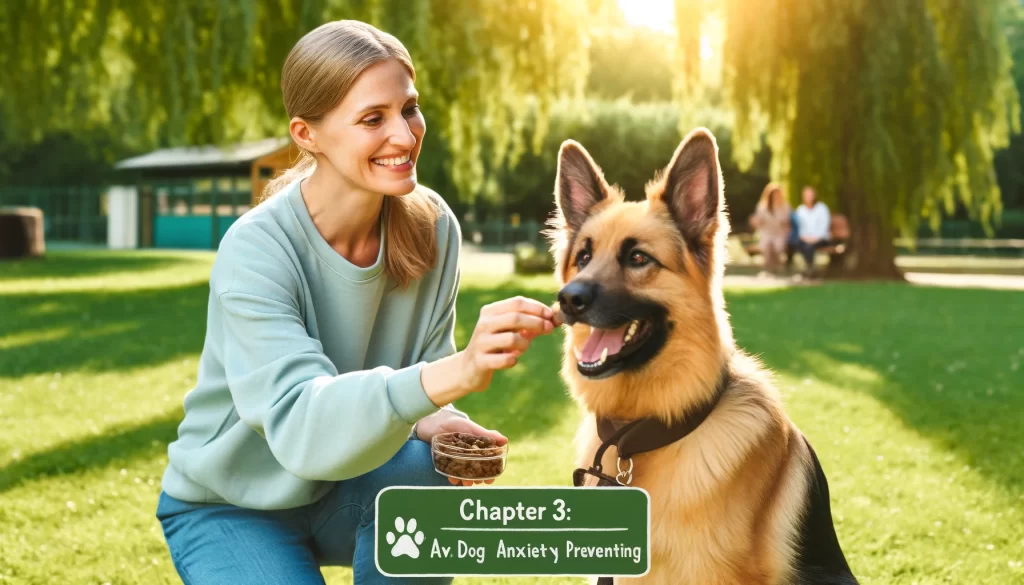
Preventing dog anxiety is often more effective than trying to manage it after it has become a significant issue. Early socialization plays a crucial role in this preventative approach. Exposing puppies to a variety of people, animals, environments, and experiences in a positive manner can help them become more adaptable and less fearful as they grow. This foundation of trust and confidence is key to preventing anxiety from taking root.
Positive reinforcement training is another essential element in preventing dog anxiety. Rewarding your dog for calm and desired behaviors not only strengthens your bond but also teaches them how to cope in potentially anxiety-inducing situations. This method encourages dogs to associate new experiences with positive outcomes, reducing the likelihood of fear responses.
Creating a safe and secure environment is also vital in preventing anxiety in dogs. This means providing a consistent routine, a quiet retreat space, and familiar objects that can offer comfort when they’re feeling stressed. Knowing they have a safe haven to retreat to can significantly reduce a dog’s anxiety levels.
Lastly, owners should be mindful of their own reactions to their dog’s anxiety. Dogs are highly attuned to their owner’s emotions, and displaying patience, calmness, and understanding can help mitigate their anxiety. By remaining calm in potentially stressful situations, you can model the behavior you wish to see in your dog, making them feel more secure and less anxious.
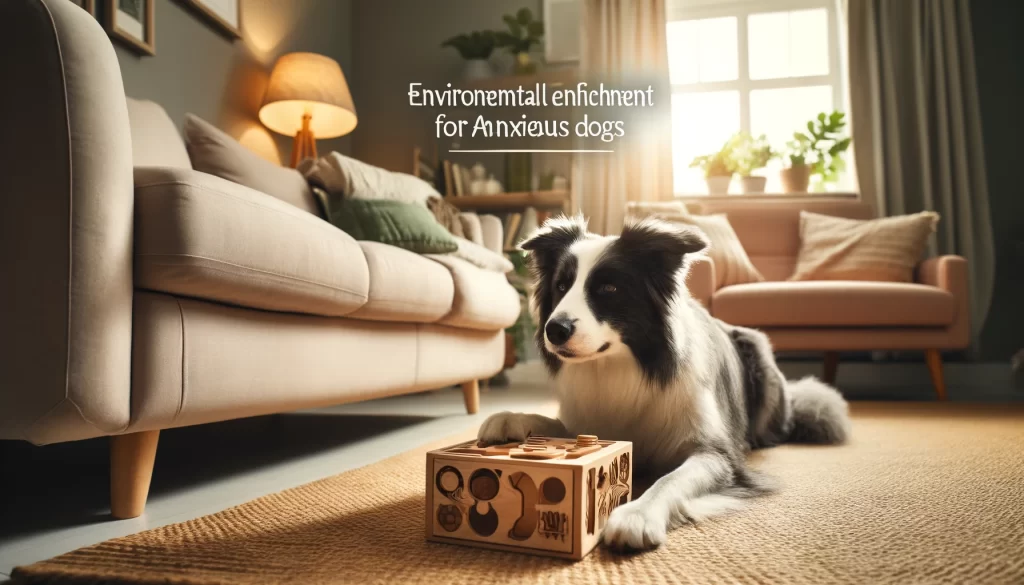
Exercise is a potent remedy for dog anxiety, serving both as a preventive measure and a calming strategy. Regular physical activity helps to burn off excess energy that could otherwise fuel anxious behaviors. A tired dog is typically a happy dog, as exercise releases endorphins that promote feelings of well-being. Whether it’s a long walk, a game of fetch, or agility training, keeping your dog physically active can significantly diminish symptoms of anxiety.
Training and socialization are not only crucial for preventing anxiety but also for calming an anxious dog. Consistent, positive reinforcement training strengthens the bond between a dog and its owner, building trust and security. Moreover, exposing your dog to various scenarios in a controlled, positive manner can desensitize them to potential stressors, reducing their anxiety over time. This approach reinforces a sense of safety and can make new or previously anxiety-inducing situations more manageable for your pet.
Environmental enrichment plays a key role in calming an anxious dog by providing mental stimulation and reducing boredom, which can exacerbate anxiety. Interactive toys, puzzle feeders, and regular playtime can engage your dog’s mind, offering an outlet for their energy and a distraction from stressors. Such stimulation is particularly beneficial for dogs with separation anxiety, as it can help keep them occupied and less focused on their owner’s absence.
In cases where anxiety is severe, seeking professional help from a veterinarian or a certified dog behaviorist is advisable. These professionals can offer tailored advice and, if necessary, recommend medications or therapy options that can further alleviate your dog’s anxiety. It’s important to view professional intervention as a supportive measure rather than a last resort, ensuring your dog receives the most appropriate and effective care for their specific needs.

Diet and nutrition play an integral role in managing dog anxiety, much like they do in human health. What your dog eats can influence their mood and behavior, impacting their overall well-being. A balanced diet rich in essential nutrients can help stabilize energy levels and improve mood, potentially reducing symptoms of anxiety. For dogs facing anxiety, incorporating foods with omega-3 fatty acids, like fish oil supplements, can be particularly beneficial due to their anti-inflammatory properties that support brain health.
In addition to a well-balanced diet, certain supplements can aid in managing anxiety in dogs. For example, L-Theanine and L-Tryptophan are amino acids known for their calming effects. These supplements work by promoting the production of serotonin, a neurotransmitter that enhances mood and reduces stress. Dog owners considering supplements should consult with a veterinarian to ensure they choose options that are safe and effective for their pet’s specific needs.
CBD oil has gained popularity for its potential to alleviate anxiety in both humans and pets. Derived from hemp, CBD can help calm nervous behavior without the psychoactive effects associated with THC. Studies and anecdotal evidence suggest it may reduce anxiety in dogs, making it a consideration for those seeking natural remedies. However, it’s crucial to use pet-specific CBD products and start with a low dose under veterinary guidance.
Calming chews and treats are another accessible option for pet owners looking to ease their dogs’ anxiety. These products often contain a blend of natural ingredients, such as chamomile and valerian root, known for their sedative properties. While not a substitute for behavioral interventions or professional treatment, calming chews can be a supportive measure for managing mild to moderate anxiety symptoms in dogs, offering a convenient way to deliver calming ingredients.
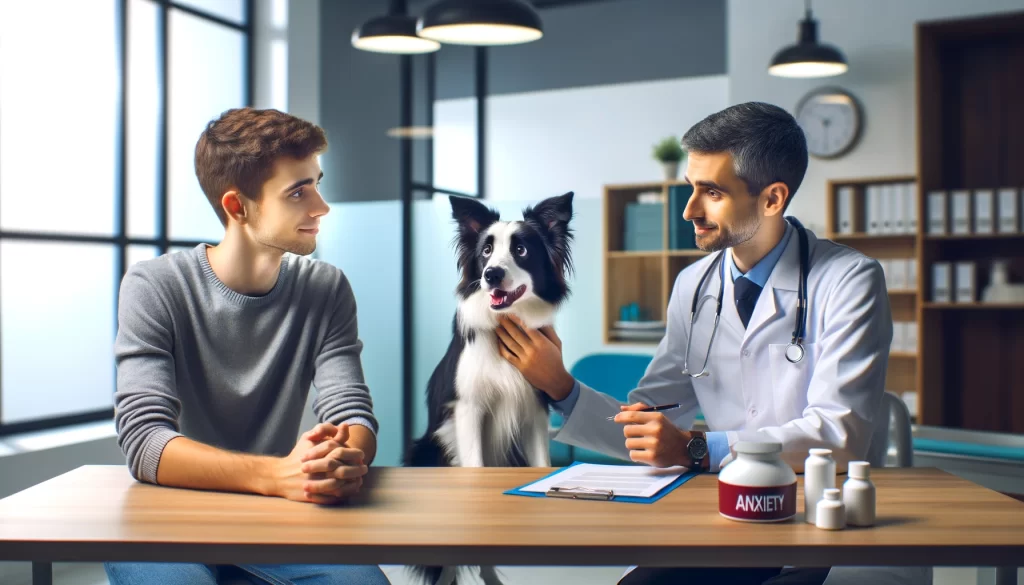
For dogs experiencing severe anxiety, professional and medical interventions may become necessary. Behavioral therapy, conducted by a certified dog behaviorist, is one of the most effective approaches. This therapy focuses on modifying the dog’s response to anxiety triggers through techniques like desensitization and counter-conditioning. Such interventions require patience and consistency, but they can lead to long-term improvements in a dog’s behavior and overall mental health.
In some cases, a veterinarian might recommend medication to help manage a dog’s anxiety. Medications such as selective serotonin reuptake inhibitors (SSRIs) or tricyclic antidepressants (TCAs) are commonly prescribed for dogs with persistent anxiety issues. These medications can help to regulate mood and reduce the intensity of anxiety responses. It’s essential, however, to understand that medication should not be seen as a standalone solution but as part of a comprehensive treatment plan that includes behavioral therapy and lifestyle adjustments.
The decision to seek professional help is a crucial step for pet owners. Recognizing when your efforts to calm your dog’s anxiety are not enough is important. Professional behaviorists and veterinarians can provide a level of insight and expertise that is invaluable in creating a tailored approach to treatment. Their guidance can navigate the complexities of dog anxiety, ensuring that the interventions are both effective and safe.
Integrating professional advice and treatment options can significantly enhance the quality of life for an anxious dog. Whether it’s through behavioral therapy, medication, or a combination of both, the goal is to provide relief from anxiety, allowing your dog to live a more balanced and happy life. Engaging with professionals also offers support and reassurance to pet owners, providing them with the tools and knowledge to better understand and care for their anxious pets.
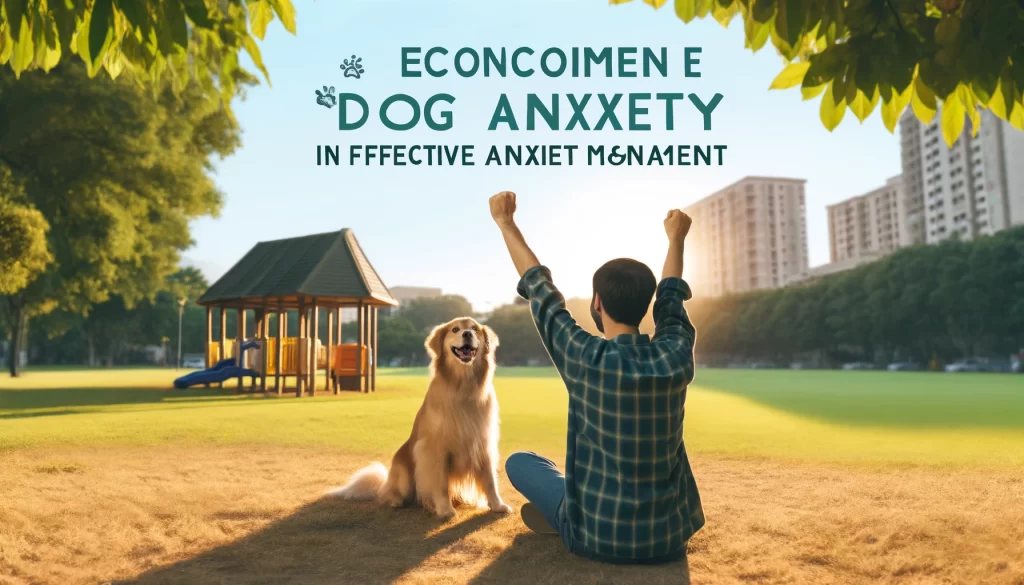
Success stories of overcoming dog anxiety serve as a beacon of hope for many pet owners navigating similar challenges. These narratives often highlight the journey of dogs who have moved from constant fear and stress to a state of calm and happiness. One common thread in these stories is the commitment and patience of the pet owners, underscoring the importance of a supportive environment in managing anxiety.
For instance, a story might detail how implementing a structured routine, including regular exercise and training sessions, dramatically improved a dog’s anxiety. Such routines provide a sense of security for anxious dogs, helping them understand what to expect each day, which in turn reduces stress. Hearing about a dog who benefited from this approach can inspire others to adopt similar strategies.
Another success story might revolve around the use of specific calming techniques, such as massage therapy or calming music, which helped a dog cope with separation anxiety. These stories highlight the effectiveness of non-traditional methods in soothing an anxious pet, encouraging owners to explore a variety of strategies to find what works best for their dog.
Finally, testimonials about the positive impact of professional intervention, whether through behavioral therapy or medication, offer valuable insights. Such accounts detail the process of working with professionals to identify and treat the root causes of anxiety, demonstrating the potential for significant improvement with the right support. These success stories not only provide hope but also emphasize the importance of seeking help when needed, reminding pet owners that they are not alone in their efforts to support their anxious dogs.
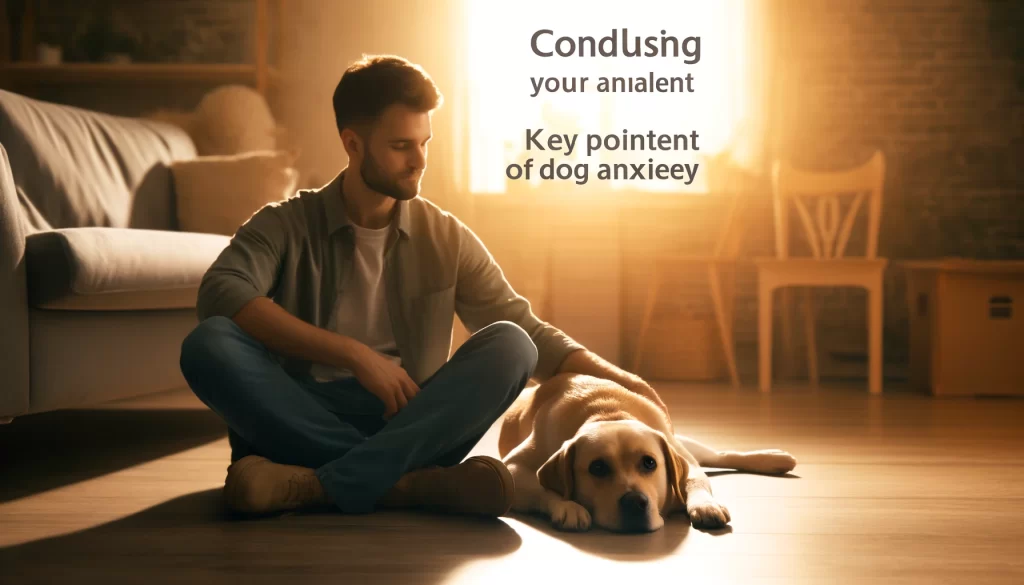
Managing dog anxiety requires understanding, patience, and a proactive approach. By incorporating the proven techniques outlined in this article, you can help your anxious dog lead a happier, more relaxed life. Remember, every dog is unique, and what works for one may not work for another. It’s important to closely observe your pet’s responses to different strategies and consult with professionals when necessary.
Together, you can navigate the challenges of dog anxiety and build a stronger, more trusting relationship with your furry friend. For more details, visit our website.




